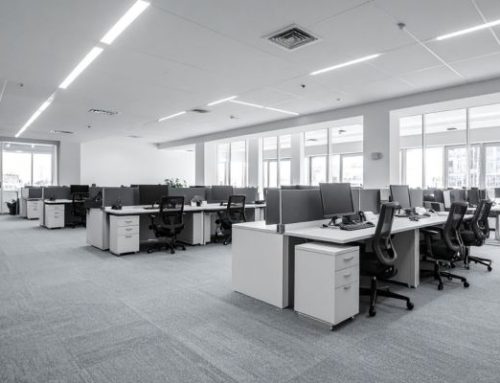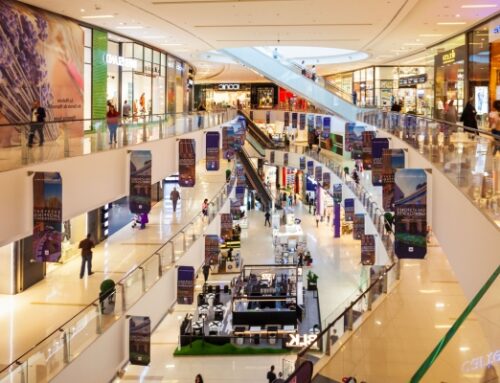Retail Foot Traffic Trends: Insights, Drivers, and Sector Highlights
Do you know the current retail foot traffic trends to implement? Foot traffic is your pillar if you operate in the retail industry. It refers to the number of people who enter your brick-and-mortar shop daily, weekly, or monthly. As you will discover below, tracking foot traffic trends has several benefits.

Retail Foot Traffic Statistics
The retail foot traffic trends have never been the same since the COVID-19 pandemic of 2020. Although footfall figures improved in 2021, when the pandemic began to disappear, they remained generally low. Shopping mall foot traffic statistics were higher than those of retail markets and groceries.
2022 was equally bad since the year-to-year footfall traffic rose only one percent from 2021. It dwindled massively in the last six months of that year. Monthly foot traffic levels continued to drop in 2023 compared to the first half of 2022. The COVID-19 pandemic continued to cause this poor performance.
As Placer.ai revealed in its recent reports, foot traffic for physical retail stores has never been as high as in the pre-pandemic era. Another reason the retail foot traffic dropped after the COVID-19 pandemic was the high reliance on online shopping. The advancing e-commerce sector is why many physical stores have developed a hybrid approach enabling them to display their products online and offline.
Although a retail visit gap occurred in January due to severe winter frost, most months of 2024 saw an increase in footfall. Easter, Halloween, and Christmas may have caused visit drops in April, September, and December.

Four Foot Traffic Trends Shaping the Industry
Retail foot traffic trends are similar to those of ad impressions and click-through rates that online marketers track. They help you determine if your advertising campaigns are increasing foot traffic and attracting your target audience. You can check if the foot traffic you get can pay your monthly rent and salary.
Above all, you can determine whether your online advertising contributes to any foot traffic. By combining these insights with proven strategies to boost retail foot traffic, you can turn data into real-world results that increase store visits and sales. If you want to generate more foot traffic, employ the following four retail foot traffic trends:
Personalize Customer Experiences
One of the top retail foot traffic trends today is personalized customer experiences in offline stores. Personalized treatments can make your customers resume with their acquaintances. Now you may wonder how personalization works.
First, ask your employees to be more courteous and happy when meeting customers. Good customer service at the store’s entrance can help a customer feel happy about your business. Another trick is to offer tailored discounts and free offers to recurrent and loyal customers.
If you have a new product, you can show your prospects augmented or virtual reality trials online. In the shop, you can create attractive product displays to attract long-lasting customers.
Experimental Retail Tactics
Experimental retail is a trend that enables sellers to see their brick-and-mortar stores in a different light. Instead of viewing them as rooms with product shelves, experimental retail allows you to visualize them as unique and entertaining spaces.
It seeks to engage customers at an emotional level, allowing them to explore your offers more interactively. Experimental retail focuses less on normal transactions and more on creating and reinforcing emotional bonds.
As a retail shop owner, you can create interactive augmented reality product displays and invite customers to workshops, exhibitions, and community events. You can also deliver one-on-one guidance on different matters to attract customers.
Social Media Involvement
Retail foot traffic trends include social media engagement. Billions of customers worldwide use social media websites daily. It has not only shortened distances between countries but also improved networking and marketing efforts.
Retailers should not only rely on the customers who step through their shop doors. They can also advertise their physical shops on social media websites. This entails creating informative and engaging posts every week.
Create Omnichannels
Another of the most brilliant retail foot traffic trends is omnichanneling. IKEA and Target are already exploring this marketing technique. The strategy directly connects offline and online stores to ensure they work together.
For instance, you can allow a customer to purchase a product online but let them pick it up at your offline store. That way, they will know your online and offline shops. A point-based loyalty program is another way to implement your omnichannel program.
It should offer redeemable points enabling customers to visit you offline shop for gifts. If you have promotions, contests, and company-based events, you can alert prospects using advanced methods like email or personal website. As you make shopping across channels possible, listen to customers’ opinions.
Retail Foot Traffic Observations in Specific Sectors
Retail foot traffic trends in the past year revealed these sector-specific observations:
- More Customer Dwell Time in Merchandising – Placer.ai compiled the “Retail Giants in 2024” report featuring Walmart, Costco, and Target. The report disclosed that many U.S. shoppers dwelled longer in shops. Walmart recorded an average dwell time of 31.8 minutes, Target scored 28.7 minutes, while Costco got 37.3 minutes. Costco may have received more dwell time due to its unique in-store experiences and bulk shopping tactic.
- Higher Competition and Dwindling Sales in Sports – According to an Ibisworld.com report on the United States sporting goods market, retailers recorded reduced foot traffic, fewer sales, and more rivalry in 2024. That was despite more customers showing high interest in enhancing their health and wellness after the COVID-19 pandemic ended.
- More Foot Traffic in Grocery Stores – Grocery stores saw an increase (2.27%) in foot traffic last year according to Pcmag.com. The sector received more than one million customers, allowing retailers like Publix and Aldi to expand aggressively.
- Eateries – Restaurants saw a slight increase of 0.78% in foot traffic in 2024 from the 2023 figures. Quick-service eateries recorded the least drop in foot traffic in comparison to other restaurants. This is so because they are convenient and inexpensive.
Retail Footfall Challenges and Solutions to Consider
Retail foot traffic trends are essential. However many entrepreneurs encounter challenges that lower their ability to leverage foot traffic. The first challenge is data inaccuracy which occurs mostly because of the preferred analytics tool. Beam counters, for instance, are less effective because they detect foot traffic only if the beam breaks.
If shoppers enter in one large group, the calculation will be inaccurate. This is the case also when one shopper crosses the beam counter more than once. It records one visitor severally, which can trigger inaccurate foot traffic data. If people leave their mobile devices at home or carry a few of them, the Wi-Fi tracking signals become less reliable.
Mastering foot traffic data starts with understanding the limits of each tracking method. Retailers who recognize these gaps can choose more accurate tools and apply data validation techniques to ensure their insights truly reflect customer behavior. This is why many businesses now rely on advanced people counting for retail stores, which provides accurate real-time visitor data to help retailers better understand customer flow and improve decision-making.
Retailers that depend on it can gather inaccurate data. People counting sensors can misinterpret footfall data if visitors enter or exit the shop as a crowd, or if they are in poorly-lit areas. A lack of robust technical support can cause data collection to fail without notice.
As a retailer, ensure you subscribe to a people counting sensor service with reliable technical support or employ knowledgeable IT staff. Another consideration is for retailers to seek training on interpreting raw footfall data that lacks usage guidelines. Training can offer them the necessary analytics skills to analyze foot traffic.
Conclusion
Retail foot traffic trends continue to evolve every year. To succeed in the crowded retail sector, learn and implement these trends. These retail trends can help you track new customer behaviors and act accordingly. You can use this valuable information to recreate your marketing campaigns and bond with your prospects.







